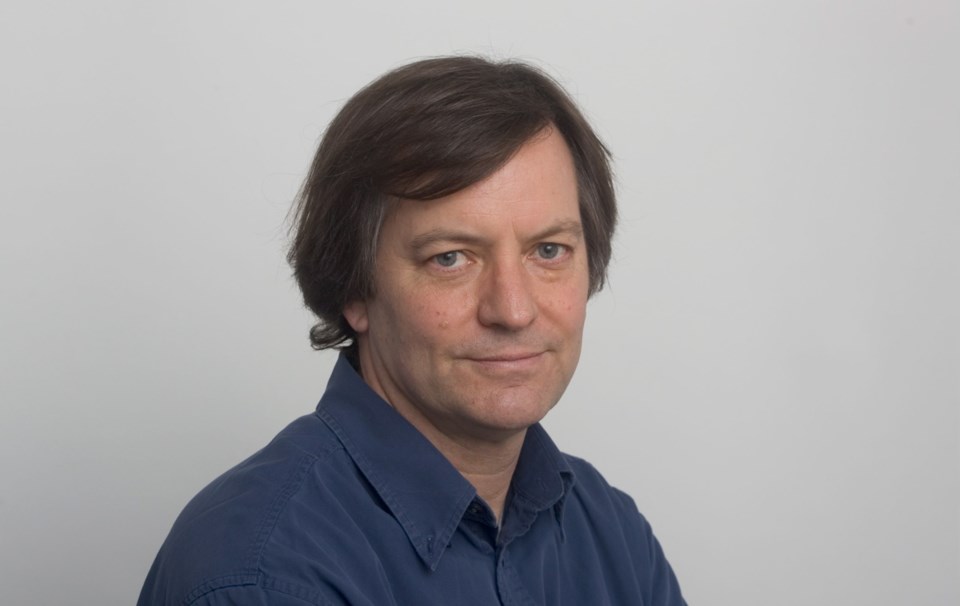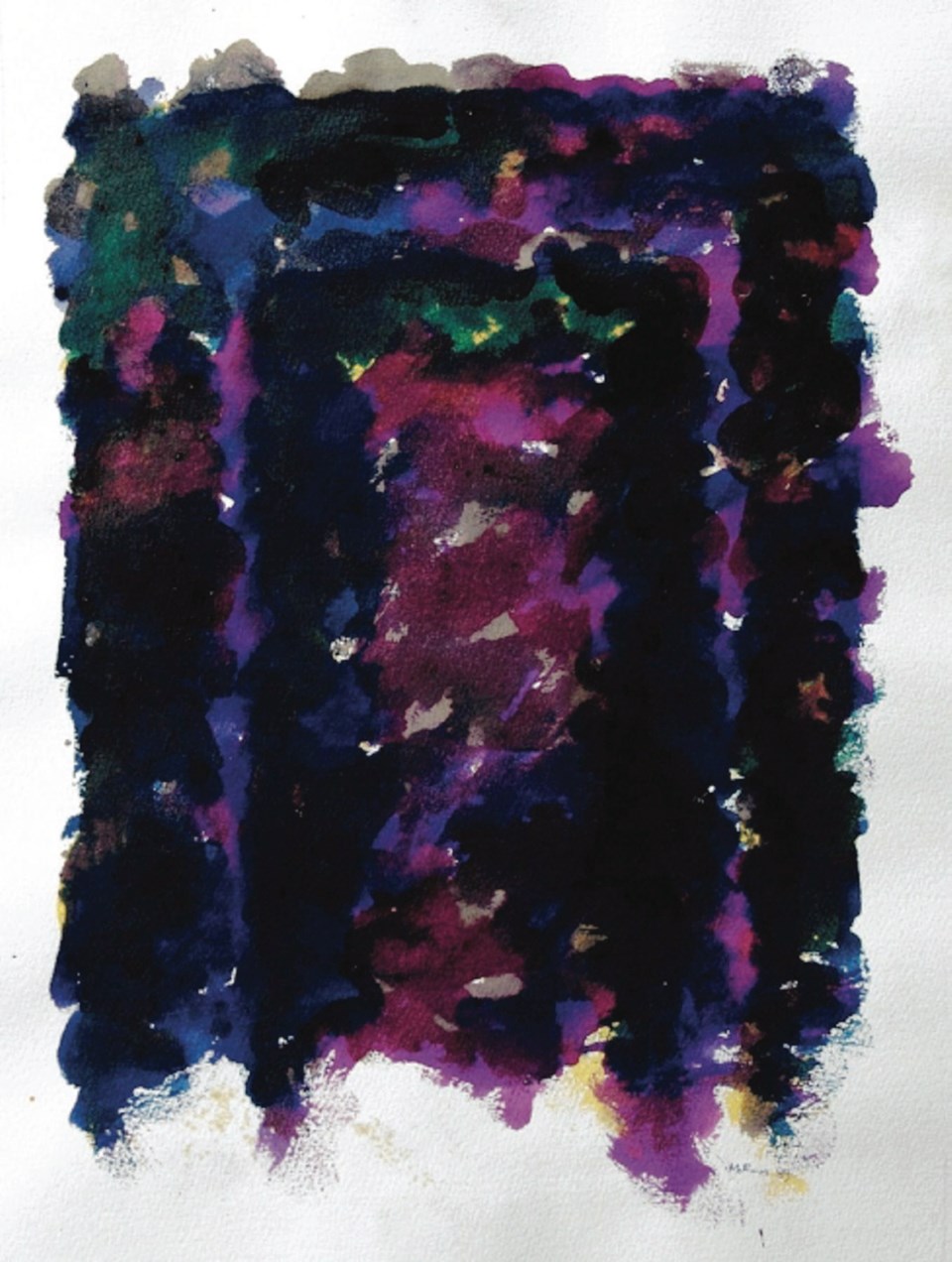ŌĆ£There are two ways to judge a painting. One is based on criteria and theories of art. The second is based on the sensation we get before a picture. I paint the second way.ŌĆØ ŌĆö Jean McEwen (1923-1999).
╠²
 When I first became aware of the paintings of Jean McEwen, a mid-20th century abstract painter from Montreal, I was less than impressed. The Winchester Gallery has often hung his watercolours, and I sometimes wondered, if I saw them lying on the floor of my own studio, would I even recognize them as paintings?
When I first became aware of the paintings of Jean McEwen, a mid-20th century abstract painter from Montreal, I was less than impressed. The Winchester Gallery has often hung his watercolours, and I sometimes wondered, if I saw them lying on the floor of my own studio, would I even recognize them as paintings?
It is essential, in the appreciation of art, to retain an open mind. Currently, Winchester in Oak Bay has a special exhibit of more than 20 McEwen paintings, including six large acrylic paintings from 1965 and 1966. Since admission is free, I thought IŌĆÖd drop by and give McEwen some time. His creations are beginning to grow on me.
First, I made my way around the room and, as a way to become familiar with each watercolour, I drew a thumbnail sketch of it. Certainly, some were the same pieces that had offended me before ŌĆö pools of dull watercolour washed to a dishwater insipidity and left to dry as they might. Two sort-of rectangles that didnŌĆÖt quite touch showed a margin of pigment left ragged at the edges when the water evaporated. Layers of paint had been applied and washed off, with occasional trickles of colour running down to the bottom of the page. It looked so easy.
Some of the watercolours had more appeal. One presented vibrant violet light flickering through a field of phthalo blue and black, with bright green bits showing through. Two were anchored with ragged squares of gold leaf at the corners. Dated 1964 and titled Drapeau Inconnu, they seemed to hint at sa╣·╝╩┤½├ĮŌĆÖs great flag debate. Held preciously in elegant frames, these painted pages would look lovely in a sparsely furnished condo. But still I wondered: Is the signature of an otherwise famous artist the only reason to cherish these sheets of paper?
After 20 minutes spent noticing the large, precise colour-field acrylics in my peripheral vision, I approached them directly. Each is a single canvas, divided into three vertical rectangles roughly equal in width. The size of these rectangles must be calculated to a nicety. A central band of pure, evenly applied colour is framed by two side pieces on which two smooth layers of contrasting colour interact.
The artist was at this point dedicated to flatness, the mantra of the time, and practised the elimination of the ŌĆ£visible brush stroke.ŌĆØ Considering the active calm that radiates from each, these large acrylics ŌĆö the Hommage aux Poetes series ŌĆö began to work on me.
The side ŌĆ£wingsŌĆØ of each of the triptychs make a matching pair. The joy in their organically brushed colour explains why McEwen called himself ŌĆ£an abstract impressionist.ŌĆØ As an exercise, I decided to write down names for each of the colours he chose.
They were painted first with a mid-tone colour ŌĆö soft taupe, sage, mauve, beige ŌĆö and then with a wide brush McEwen thoughtfully overlaid a field of gestural marks that let the original ground show through. Pink plays on putty; pistachio hovers over violet.
Compared to whatŌĆÖs underneath, the colours of the broken field on top are tonally identical ŌĆö their lightness or darkness is exactly equal. But the chroma ŌĆö the colour I was naming ŌĆö is different. The effect of this juxtaposition is not a jarring pair of complementary colours but reads as an attractive and gently vibrant field.
Each central panel is more forceful in effect, matte rather than shiny, with the colour applied evenly without a trace of the brush. I groped for words to represent what I was seeing. Dusty mustard, mint green, cream of tomato soup, old linen. Together the simple centre and the complex sides sing together in a chord of colour, unobtrusive and obviously chosen with care.
The total effect of these paintings is beyond words. They do have titles: Dans la Puret├® du Non-etre; Sun Lovers #2; En Marge dŌĆÖun Beige, and the titles, if not the paintings, are based on Paul ValeryŌĆÖs poem ├ēbauche dŌĆÖun Serpent, and the opera titled Werther by Jules Massenet.
That literary stuff seems beside the point. Each outer rectangle is bordered by a thin margin of colour, a hard edge created with masking tape about as wide as a pencil. And the centre panel is also bordered with its own pencil-wide border of a different colour. Between the outer and central panels, these two margins abut, creating neat pairs of colour that interact. Baby blue runs alongside yellow ochre/gold; puce meets pale purple; dove grey holds quiet talks with pewter.
From across the room, the effect of these little pairs of stripes is almost below the visible, and twinkles in a sweetly mysterious way. ThatŌĆÖs one of best things about these paintings.
I havenŌĆÖt mentioned much art history, but youŌĆÖll know where to look: Paris, New York, Les Automatistes, the Non-figurative Artists Association in Montreal. And some context is provided by Winchester Galleries, which has helpfully hung related paintings by Jean-Paul Riopelle, Leon Bellefleur and Larry Poons. I leave the research to you.
For me, itŌĆÖs just a chance to come to terms with a suite of paintings by an artist who wants you to enjoy his work. I know that non-representational art isnŌĆÖt everybodyŌĆÖs first choice, but IŌĆÖm beginning to enjoy these paintings by Jean McEwen.
Note: Last week in my column about Painters at PainterŌĆÖs Lodge I named many of the artists involved, but not all. The event has also included Toni Onley, Geoffrey Rock, Fenwick Lansdowne, Glenn Howarth, Alan Hancock, Mickie Acierno, Brent Heighton, Peter Shostak and Brent Lynch. Just trying to keep everybody happy!
╠²
Jean McEwen at Winchester Galleries, 2260 Oak Bay Ave., winchestergalleriesltd.com, 250-595-2777, until May 30.



